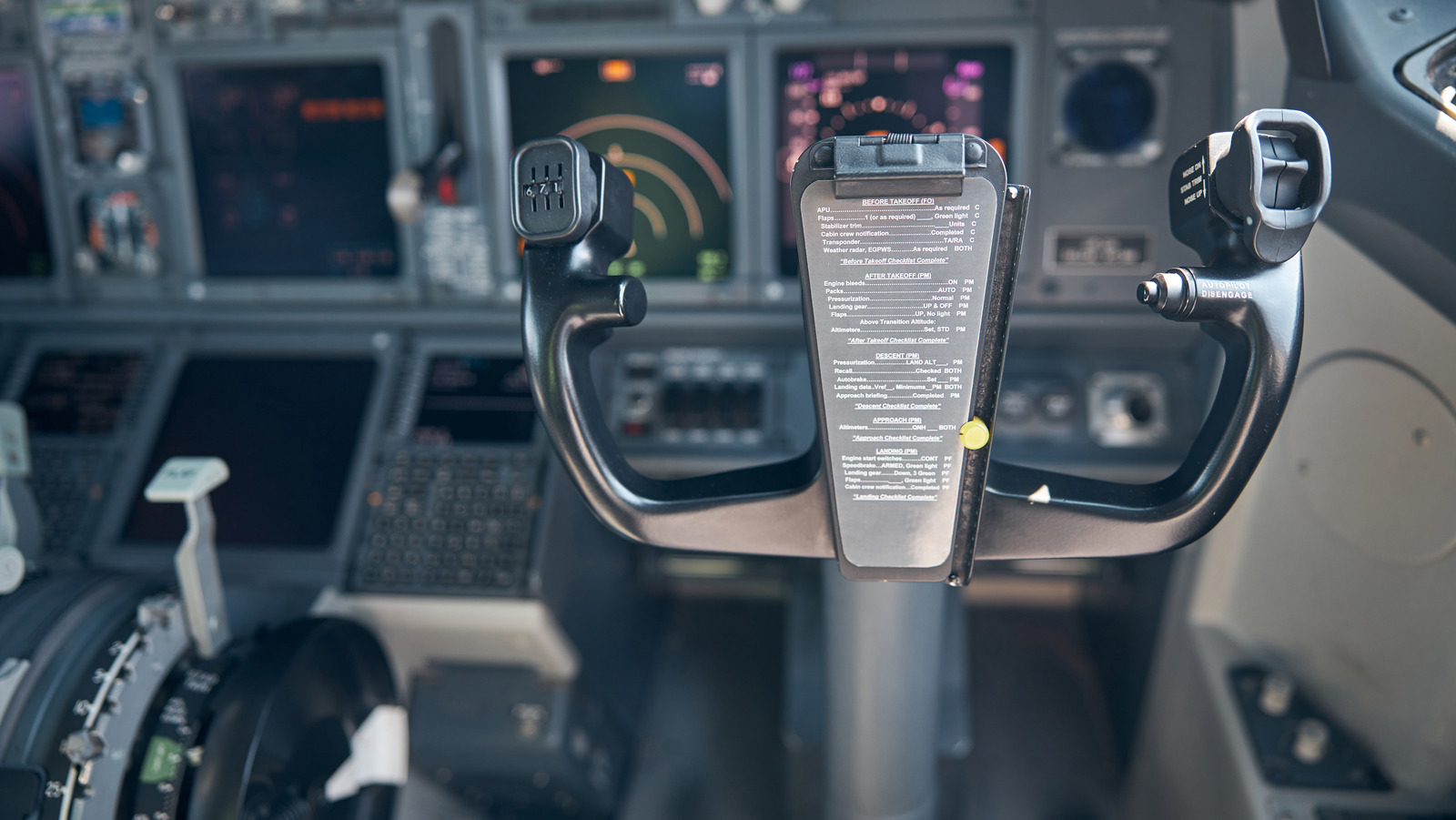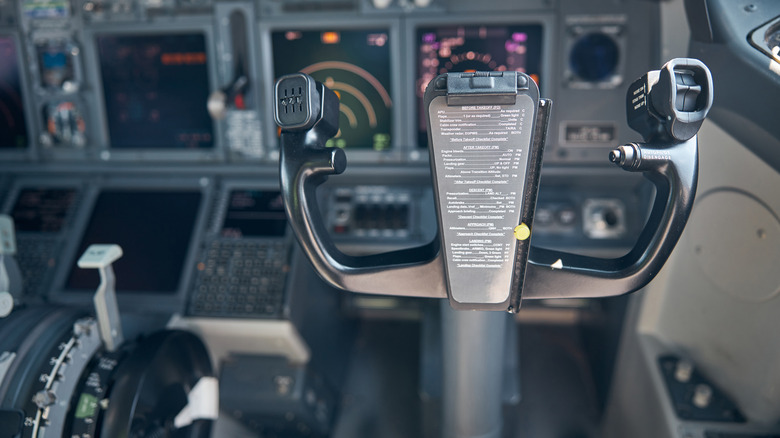Yokes, at least for aircraft controls and not electric cars like Teslas, go all the way back to the early 1900s, before hydraulics were on planes. Since the pilot’s input physically moved the necessary cables attached to the plane’s moving parts, they’d really need to put their muscle into it. That meant having a big, sturdy thing they could grab with both hands and wrestle with. The yoke, also called a control column, was form meeting function.
That function has changed a lot in the modern era, however. In a time when most planes are fly-by-wire (meaning the pilot’s input goes to a computer, which then figures out which parts of the plane to move), the yoke may seem like a bit of a relic. Indeed, European aviation juggernaut Airbus ditched the control column in 1985 with the introduction of its A320. Opting instead for a side stick — a much fancier version of a joystick control — Airbus let its pilots make small, simple hand movements that the computer would translate to the rest of the aircraft.
And yet, to this day, America’s airliner powerhouse Boeing continues to put a yoke on every single one of its commercial planes. It’s not that it missed the memo of what Airbus was up to, though. Boeing continues to believe that a yoke confirms the importance of the pilot over the computer, and it believes that very prominence distinguishes its planes from the competition.
A yoke puts the emphasis on flying
Boeing has at least thought about switching to side sticks as far back as the development of the venerable 737 in the 1960s. Over the decades, however, it has stuck with the yoke. For one thing, that makes it easier for pilots of one Boeing plane to jump into the cockpit of another, since this pivotal system is essentially the same in all of them. That reduces retraining costs and preserves a pilot’s comfort and familiarity.
Using a yoke is also a much more actively involved experience than using a side stick. Even though most modern Boeings are fly-by-wire (though, notably, not the troubled 737 MAX), the company still requires the pilot to make a number of decisions about the flight that might otherwise be automated. The idea is to put the pilot in the center of the experience, rather than hope the computer is working correctly.
In addition, the yokes of the pilot and co-pilot are designed to give direct tactile feedback to each other. This way, when one of them makes a move, the other can both see it (since the yokes are in front of them) and feel it. This keeps the pilot and co-pilot in better coordination and helps prevent them from accidentally fighting each other’s controls — coordination that could be vital in emergency situations.
Side sticks put the emphasis on information
Yokes are, by their nature, big and bulky things right in front of the pilot. That also takes up a lot of visual space, making the cockpit cluttered. One of the reasons Airbus switched to sticks, which are small and to the pilot’s side, was to free up room for more, and bigger, displays. The emphasis of the Airbus experience, therefore, is not so much on the flying as on the monitoring of critical data and information. The fly-by-wire computer can handle all the little details. Depending on the pilot, that might be viewed as a major convenience or a major loss of human value.
But the Airbus design doesn’t allow for direct feedback between the pilot’s and co-pilot’s sticks (even though this technology does exist). Since they can’t even see each other’s sticks (because they’re off to the side), there’s no real way for the pilot and co-pilot to know exactly what the other is doing at any given moment. This can be dangerous in an emergency. Indeed, the tragic crash of Air France flight 447 was attributed to this exact issue. Of course, one way Airbus might get around this is by ditching the co-pilot altogether.





